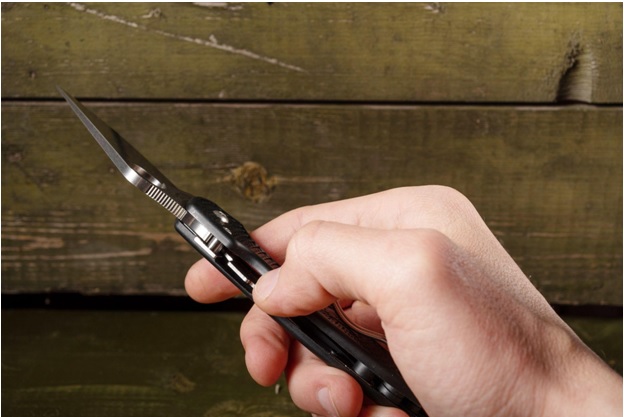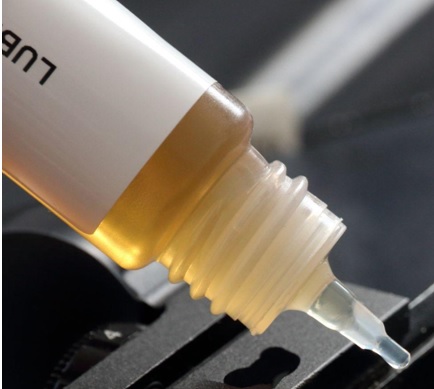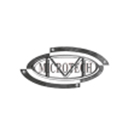Spyderco Pocket Knife Care and Maintenance
9th May 2023
A Spyderco pocket knife is an investment in a quality tool. Spyderco’s pocket knives are renowned in the industry for their top-tier construction, quality materials and components, and downright durability.
With that said, there is no substitute for maintenance, and with the right care and attention your Spyderco pocket knife will probably outlast you.
Here’s how to properly care for it.
The Importance of a Deep Clean for Your Pocket Knife
For most people, most of the time, routine pocket knife maintenance is not more involved than wetting the blade, wiping it down, and giving the edge a few fresh passes on a medium grit stone.
But folding knives have a very unpleasant habit of accumulating dirt, grease, and dust in places that fixed knives just can’t dream of.
These unsavory elements will build up in between the liners, within the lock, and in the pivot mechanism. After a while, it may become tough simply to open and close the knife.
When this happens - although, preferably, before this happens - it will become necessary to take your Spyderco pocket knife apart entirely and clean all of the components individually.
Disassemble the Spyderco Pocket Knife
The first thing you need to do before giving your pocket knife a deep clean is to take it all apart.
Remove all of the screws and place them to the side, preferably in a magnetic tray (see below). When you remove the scales, take care not to lose the lock components.
For liner locks, this is no big deal. The liners are integral to the lock and are one piece. But for other lock types, like compression locks and lock backs, the lock mechanism may contain separate pieces like a bar and lock spring that you will need to take care not to lose.
Take everything apart, remove the blade and pivot assembly from the scales and liners, place them on a clean mat on a level surface, and get a bowl of warm water.

Store Screws in a Magnetic Tray
Our suggestion is to use a small magnetic tray to hold all of your screws. It’s too easy to lose them otherwise, and a magnetic tray will hold tight onto all of them, so even if you tip it, they won’t all go flying all over the place.
Clean the Blade, Scales, Liners, and Other Components
Soak your blade, scales, liners, and the other components (except the screws) in the soap and water mixtures.
After a few minutes, remove each, one at a time, and use a nylon or brass brush to scrub off any grime that’s stuck onto them.
Take care when handling the blade as it is obviously going to be sharp. However, focus some of your attention on the shoulder of the blade, near the pivot point, where grime and oil will accumulate.
The hole through which the pivot screw runs will probably have oil and other residues around it that you will want to scrub off.
Allow to Dry Thoroughly
Once you have thoroughly cleaned off your Spyderco pocket knife, you will want to place all of the components you cleaned onto a dry paper towel on a level surface.
You need to dry them off completely before reassembling the knife, as any trapped moisture can result in corrosion that will eventually cause the seizure of moving parts.
Many Spyderco pocket knives are made with stainless steel or other corrosion-resistant components, but it’s also better not to take chances.
Once you’re confident all of the components are completely dry, you can start reassembling the pocket knife in the reverse order from which you took it apart.
Lubricate Screws with a Drop of Oil Before Reassembling

One note on reassembly - when you start to put the knife back together, one suggestion we have is to apply a single drop of oil to each screw before reassembling.
As you reinstall each screw, applying a drop of oil to the threads of each will help seal out atmospheric moisture, helping to serve as a barrier to corrosion.
It will help ensure that none of your screws get frozen in place due to rust.
Lubricate Pivot with a Drop of Oil (Not Too Much)
After you have reassembled your Spyderco pocket knife, torque down a bit on the screws to ensure everything is tightly assembled.
Then, find the right balance for your pivot screw, as, if it is tightened too much, it will be difficult to open and close the knife.
After you find the right balance, consider giving a drop of oil - but no more than this - to the pivot mechanism.
A little oil will protect the bearing from corrosion and will help ensure that the knife opens and closes fluidly.
However, too much oil will serve as a magnet for dust and other particulate debris, which is something you’ll want to avoid if you can.
A little oil goes a long way. Using more just means you’ll need to take the knife apart and clean it more frequently, anyway.
Keeping It Sharp
One final note on Spyderco pocket knife maintenance. Even though it has nothing to do with keeping the knife clean, it’s pretty important to keep it sharp.
A sharp knife is a safe knife, as a sharp knife will cut cleanly without requiring you to use extra force or struggle - which can cause slips and accidents.
So, after you clean your Spyderco pocket knife, bring the edge back to hair-popping status.
After, we say, because it’s safer to handle and clean a dull blade than a sharp one!
Need a New Spyderco Pocket Knife?
Here because you’re looking for a brand new Spyderco pocket knife for your collection?
Check out our Spyderco collection via the previous link. We carry a wide range of Spyderco pocket knives (and fixed blades and tools, for that matter) at great prices. We also offer free shopping on orders in the United States.
Don’t see the Spydie you’re looking for? No problem - we have great relationships with our vendors and can probably get it for you. Contact us at WhiteMountainKnives@gmail.com, let us know what you’re looking for, and we’ll help you find it.











